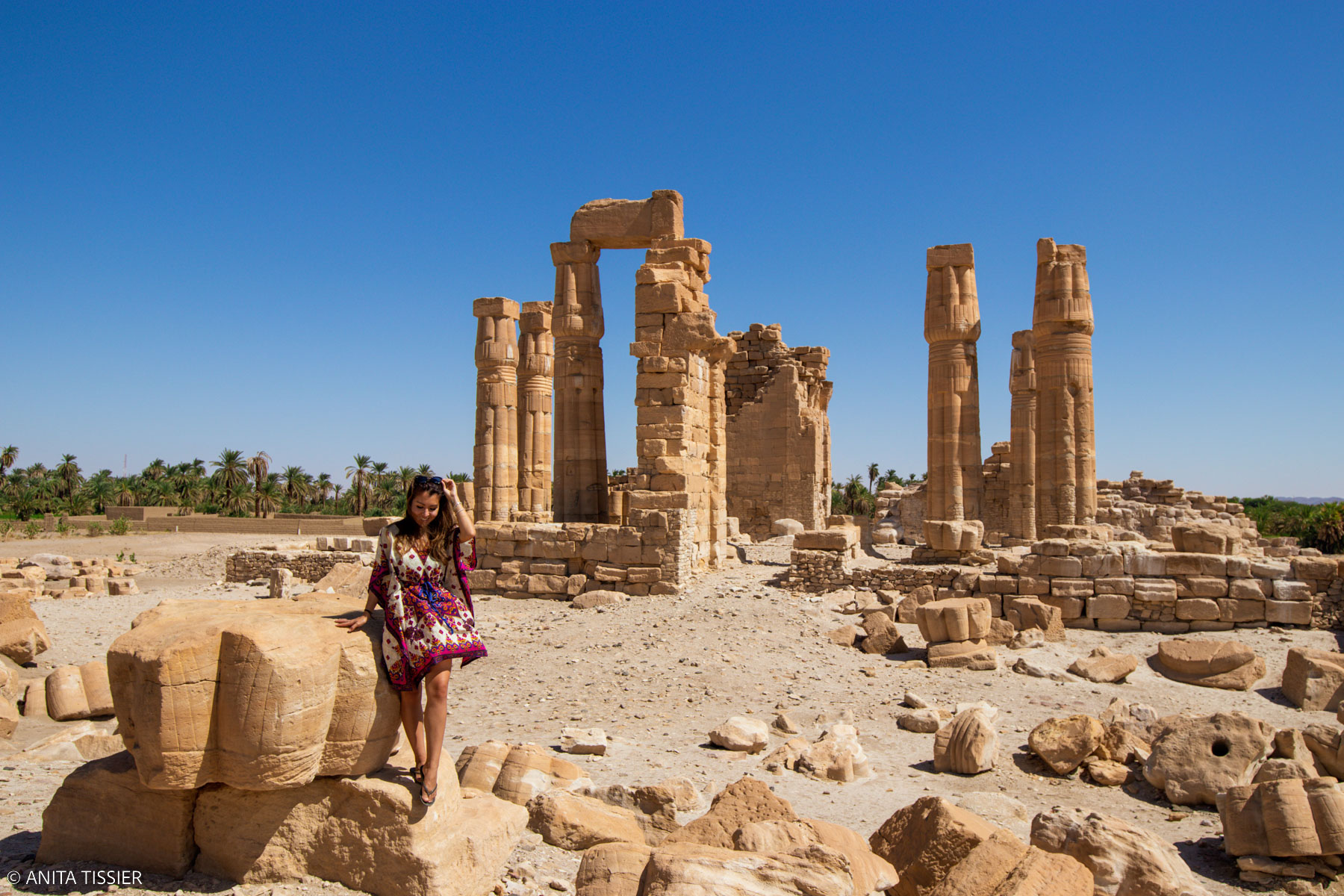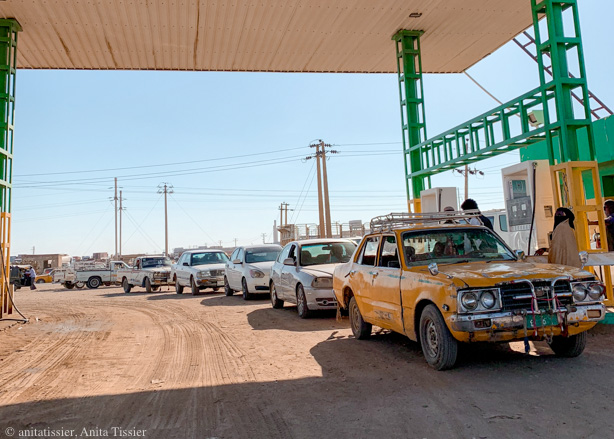A Guide To Travelling Sudan¶
For my first blog post, I'm so excited to share with you some of my experiences from one of my favourite destinations in the entire world so far: Sudan! It’s one of the only places we’ve been where we had beautiful and untouched archaeological sites to explore, all to ourselves. Visiting the incredible ancient ruins made me feel like an adventurer who was discovering and deciphering all the mysteries of Sudan. But the one thing I love most about this country is it’s incredibly friendly, kind-hearted and welcoming people.
Sudan Must Visits¶
Here’s our top three places for must-gos: Pyramids of Meroë, Jebel Barkal and Soleb Temple!
Pyramids of Meroë¶
One of my my favourite moments of our entire trip was watching the sun set over the beautiful desert sands at the Pyramids of Meroë: This is Sudan’s most famous sight, with over one hundred pyramids to explore.
| 1 | 2 |
|---|---|
 |  |
It was unbelievable that we had the entire place to ourselves - other than some friendly camels around! This was quite possibly one of the most astonishing sunrises I’ve seen. I just wished that moment would never end, since Jean-Claude and I were running around trying to capture it from every angle while trying to enjoy it simultaneously. It was already 6pm when we arrived, after a long 6 hour drive to be able to catch the sunset. It was so magical having this place all to ourselves, but it’s also less embarrassing since no one was there to watch us frantically racing from the car and running around trying to capture it!
Soleb Temple¶
Pictured are the ancient ruins of Soleb Temple, a temple dedicated to the god Amon-Re. It was built in the 14th century BCE by Amenhotep III, who was the same pharaoh who gave us Luxor in Egypt!
Jebel Barkal¶
Another one of our favourite spots in Sudan is Jebel Barkal. After a short climb up to this viewpoint on Jebel Barkal mountain, we watched the sun set behind the beautiful pyramids in the horizon.
Fun Fact
Did you know that Sudan actually has more pyramids than Egypt? Except Sudan's pyramids are a bit smaller and steeper. These ones are among the oldest in Sudan – dating back to the 7th century BCE.
Another few places that I’d definitely recommend you stop by are: Nuri, Wadi Haifa, the Khatmiyah Mosque in Kassala, Port Sudan and Lake Nasser.
Safety¶
I have had a number of people ask me about safety in Sudan, especially after the street protests from Dec 19th, 2018 to Aug 17th, 2019. I can honestly say that Sudan had some of the friendliest locals we’ve ever encountered. Sudan is a safe country and people are incredibly helpful. Very few people speak english fluently outside of Khartoum, but that doesn't mean they won’t try to communicate with you! We had many people come up to us to take pictures with us and ask us if we are enjoying our trip. There aren't very many tourists (we only saw about 20 tourists over more than a week) so they’ll try to go out of their way to make you feel welcome!
However, there are some areas you should avoid: border areas with the Central African Republic, Chad, Libya, Eritrea and South Sudan. The political climate is also always changing all over the world, so I’d recommend any future travellers to check the travel advisories whenever you are planning your visit.
Transportation¶
Travelling between cities and villages can be done by car or by mini bus. The roads are generally in a good condition, not too many bumps or potholes. We did, however, have to deal with shortages of fuel at the gas stations along the road. Many of the stations that we passed had no fuel, and there would be very long lines if there was any. I would recommend taking a few extra gallons of gas with you on the road if you’re travelling by car, and also prepare some money for bribes at checkpoints to carry the extra fuel. At the time of our travel, there was a shortage of fuel country-wide which is why it was so hard for us to find any.
Places to Stay¶
When looking for places to stay in Sudan, you have to keep in mind that tourism is not a very big industry — almost non-existent. So hotels, home stays and camps and their facilities in can be very basic.
| 1 | 2 | 3 |
|---|---|---|
 | 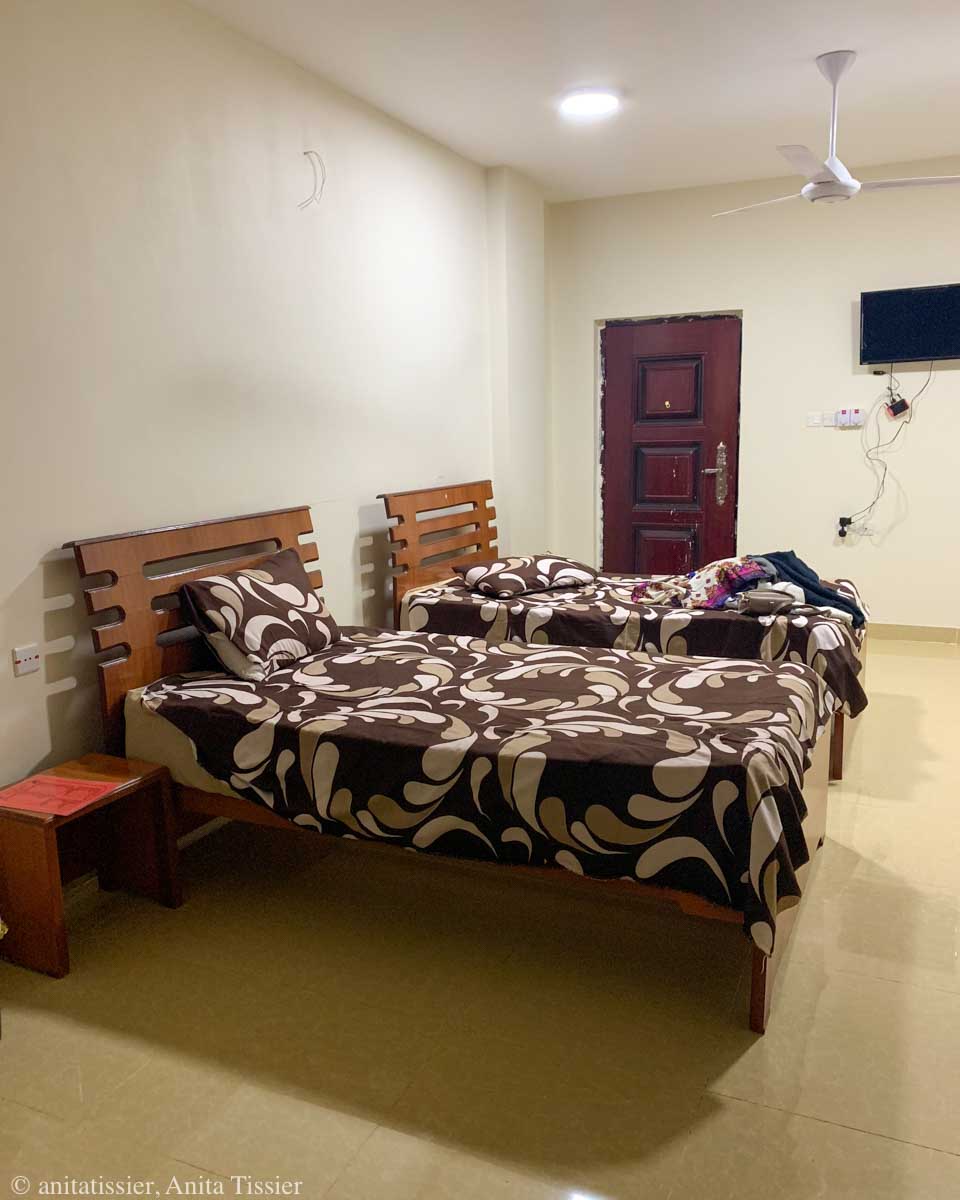 | 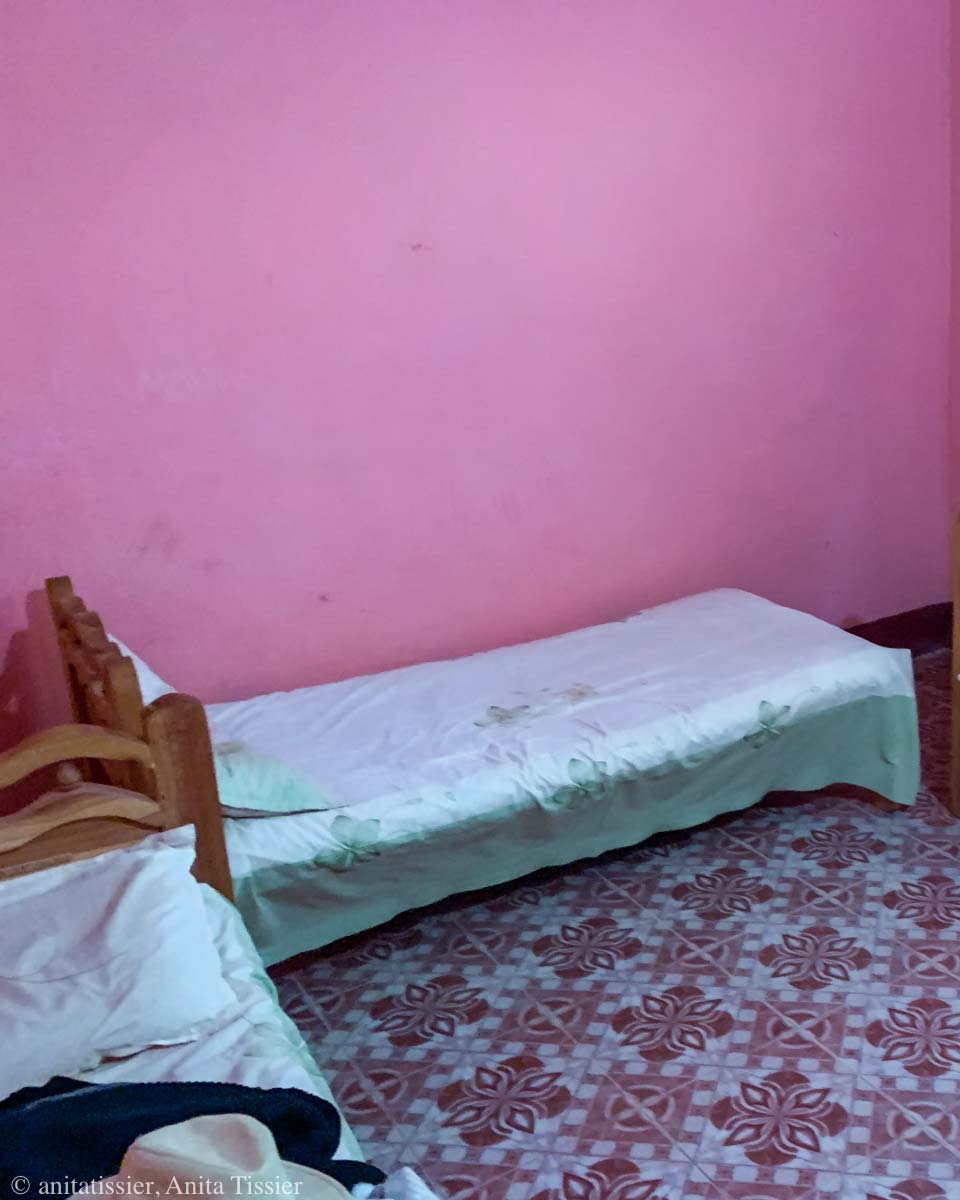 |
Sudanese Food¶
I’m going to be completely honest here, I don’t think food was one of the most memorable things of our trip, but it was extremely inexpensive. But the two things I’d definitely recommend trying would be ful — a fava bean breakfast dish that is popular, or Sudanese Tamiya (falafel) for 15 Sudanese pounds.
| 1 | 2 |
|---|---|
 | 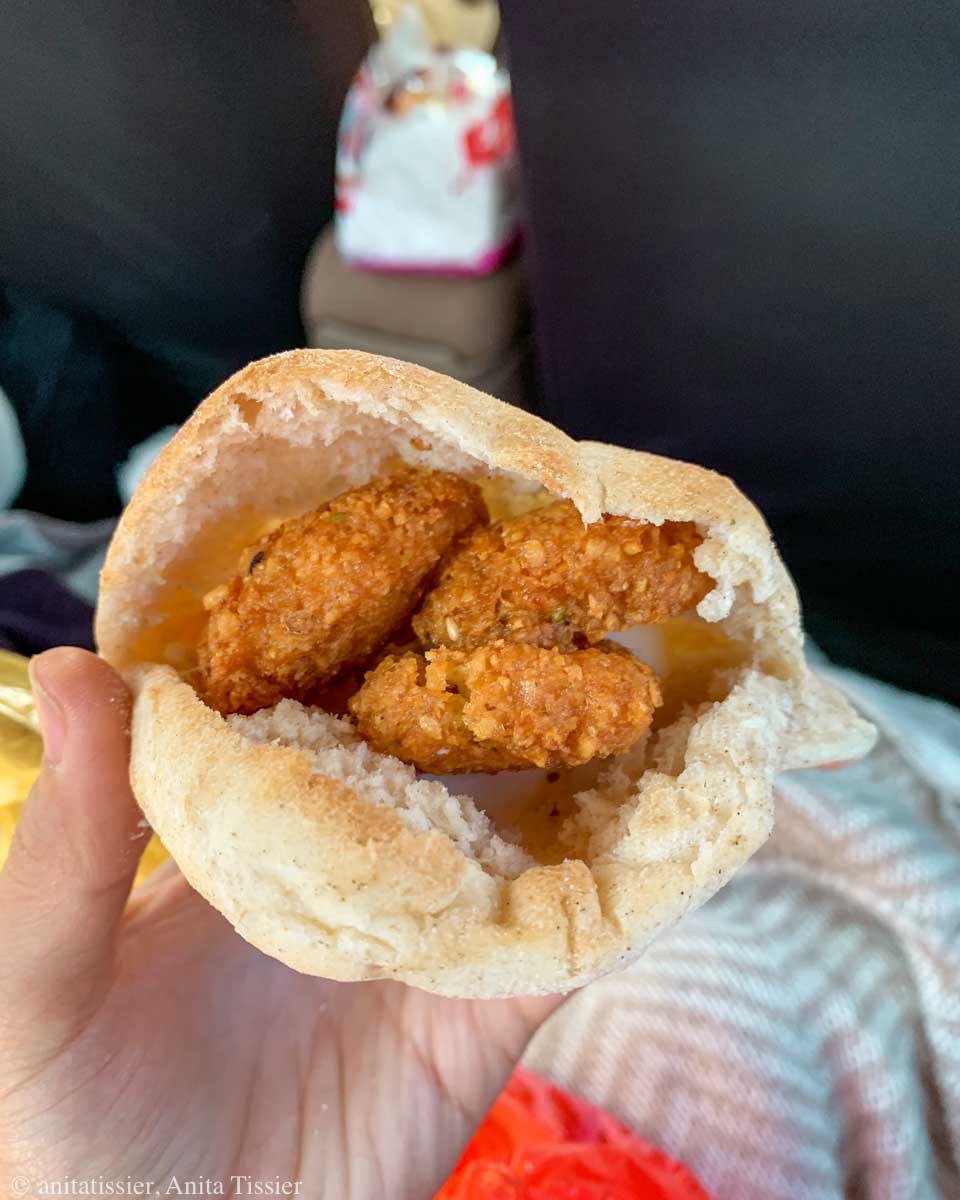 |
Money & Currency¶
The official exchange rate in Sudan (May 2020) is 55 Sudanese pounds (SDG) to $1 USD. But don’t make the same mistake as us when we first arrived. We exchanged $50USD at the airport, and then realized that there is a much better black market rate.
Black Market Exchange
There’s many people in Khartoum on Palace Street exchanging money for the black market rate - which at the time was 80 SDG to $1 USD or 85 SDG for €1.
Generally, we didn’t need to negotiate prices too often as we found their prices are often honest. It is recommended to negotiate sometimes at local stalls, for night at a hotel or camp, or even entrances to archaeological sites. It’s always possible to get a better deal.
Best Time to Visit¶
The best times to go to Sudan are in the winter months. I’d recommend December, January or February, when the highest temps are 31-34°C and the lows are 17-18°C. We visited in November and the heat was bearable, but still sweltering during the day! Especially since a lot of the archaeological sites are in the desert.
Sim card & Internet¶
It’s pretty easy to buy a SIM card in Sudan, we got ours the moment we exited the arrivals hall the airport from ZAIN and I had no problems with connection (3G data) the entire time. You can also buy one at any of the ZAIN shops around Khartoum. If you are arriving by land, you’ll be able to find a ZAIN stand in Wadi Haifa as well.
Language¶
Although Arabic is the official language, we didn’t have too much trouble talking to locals in english.
How to get a visa¶
This information has been updated for May 2020, but things can change day by day and dependant on your nationality. We have an EU (French), Canadian & US passport but only used the French & Canadian passport for the visa process in Cairo. It looks like the visa process for Americans was sometimes more complicated, more expensive and a letter of invitation was necessary at some of the embassies.
There are a few options for getting your visa to Sudan. The easiest way at is the embassy in your country, but there may be more required supporting documents like a letter of invitation. There are also embassies in Nairobi, Addis Ababa, Aswan and Cairo that usually issue a visa within 24 hours, sometimes even on the same day. Prices range anywhere from $50 to $150 USD.
Required Documents¶
When applying for a visa at an embassy outside your country of residence, make sure to have all of these documents:
Required Documents
- your original passport
- a photocopy of your passport photo page
- a copy of the visa of the country that you’re currently in
- two recent, passport-sized photos of you
- a letter of invitation (LOI) IF necessary
- we didn’t need this in Cairo but we have heard that it’s sometimes necessary when applying in Addis Ababa
- $50-150 USD in change, make sure to have change incase they don’t have exact change. we made this mistake and had to exchange with some friends we met at the embassy
- Sudan hotel information and reservation confirmation
We got our visa in Cairo, and not going to lie, this process was definitely a bit hectic!
- If you forget to make copies before arrival, there is a copy shop across the street from the embassy.
- If you need any passport photos, there is Fuji Photo store about 10 minutes away by foot.
- If you forget to make copies before arrival, there is a copy shop across the street from the embassy.
- If you apply in the morning, you can get your visa by 3pm. We arrived a bit too late, so we had to pick up our visa in the afternoon the next day. We paid $150 USD for a single entry visa that’s valid for 30 days.
We didn’t have experience with getting our visas in Addis Ababa, Aswan or Nairobi, but from speaking with other travellers and our own research, this is the information we’ve gathered.
Cairo, Egypt¶
Apply in Cairo
If you’re applying in Cairo, head over to the Embassy of The Republic of Sudan on Ahmed El Shatoury Street in Ad Doqi. Keep in mind that:
- the price is $150 USD
- the Consulate is always closed on the weekend — Friday and Saturday.
- the visa section is closed on Wednesday
- working hours for the visa section 8:30AM to 12:30PM, but I’d recommend you getting there as early as possible to be able to avoid the crowds and get your visa on the same day
- no appointment necessary
Aswan, Egypt¶
Apply in Aswan
If you’re applying in Aswan, head over to The Consulate of the Republic of Sudan. Keep in mind that:
- the price has recently increased to $150 USD
- the Consulate is always closed on the weekend — Friday and Saturday
- the visa section is closed on Wednesday
- working hours for the visa section 8:30AM to 12:30PM, but I’d recommend you getting there as early as possible to be able to avoid the crowds and get your visa on the same day
- no appointment necessary
Nairobi, Kenya¶
Apply in Nairobi
If you’re applying in Nairobi, head over to the Embassy of Sudan. Keep in mind that:
- the price is $55 USD for single entry tourist visa
- visa applications are only accepted on Mondays and Wednesdays from 9AM to 12PM. visas can be only picked up on Wednesdays and Fridays in the afternoon
- you may be asked for for a LOI, some travellers have been questioned for this, some don’t. We’ve heard a few accounts of travellers getting turned away without an LOI
- the process takes one to three working days
Addis Ababa, Ethiopia¶
Apply in Addis Ababa
If you’re applying in Addis Ababa, head over to the Embassy of Sudan. Keep in mind that:
- the price is $68 USD for single entry tourist visa
- be sure to arrive before 11AM, as they stop accepting applications after that
- they may give you trouble if you don’t have a LOI
- the process takes one working day
Registration¶
One important thing to keep in mind is to do the registration at a police station within 72 hours of arriving in Sudan. Upon arrival at the airport or any of the border crossings, you will be given a registration form. Make sure you fill it out and don’t lose it - you will need to bring this document with your passport to the local police station or to the Khartoum’s Ministry of Tourism within 3 days after entering. It should only take about an hour for the whole process, and different stations have different fees.
If your final destination is Khartoum (and you don’t leave Khartoum), you don’t need to get this permit. But if you’re leaving the city, which most travellers will do, the authorities will ask you for this permit when leaving Khartoum. You can also register at other entry ports, including Wadi Halfa, Khartoum, Wadi Halfa, Port Sudan and Sawakin.
We’ve also heard from other travellers that some hotels require you to register at the local police station — this process is free and won’t take more than 5 minutes but we weren’t asked to do this in any of the places we stayed.
Final Thoughts¶
Traveling in Sudan was one of the most unique experiences we ever had. Yes, we had some incredible archaeological sites to ourselves, but the most memorable thing for us was the kindness and hospitality that we were shown from the locals.
Exploring Sudan is about all about meeting the locals who will ask you to share cups of tea, coffee, meals with you throughout your day. If you would rather travel to Sudan with a tour guide, we have a good friend, Osman, who runs his own tour company with personalized tours. You can contact him at itravelsudan@gmail.com or info@tours.sd.

